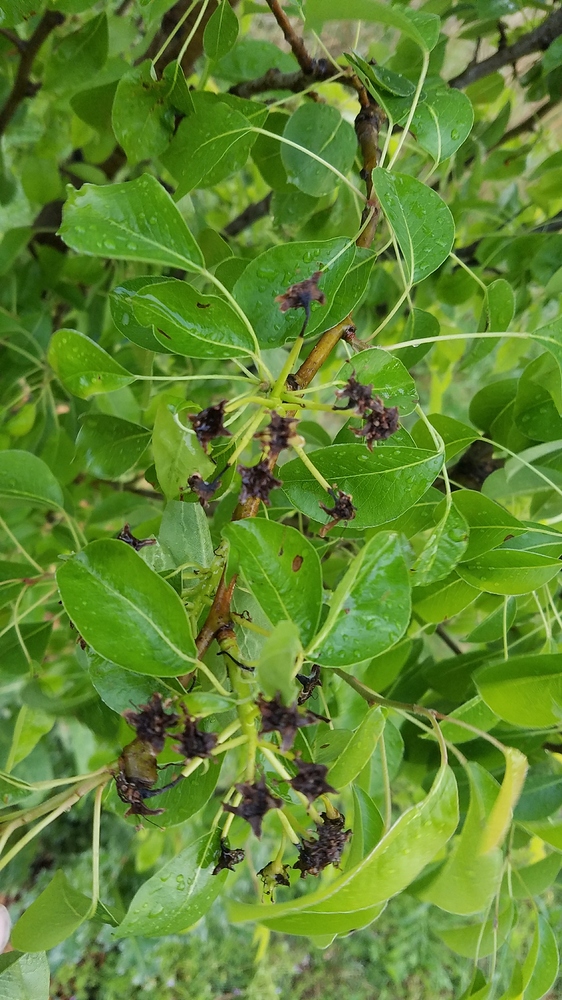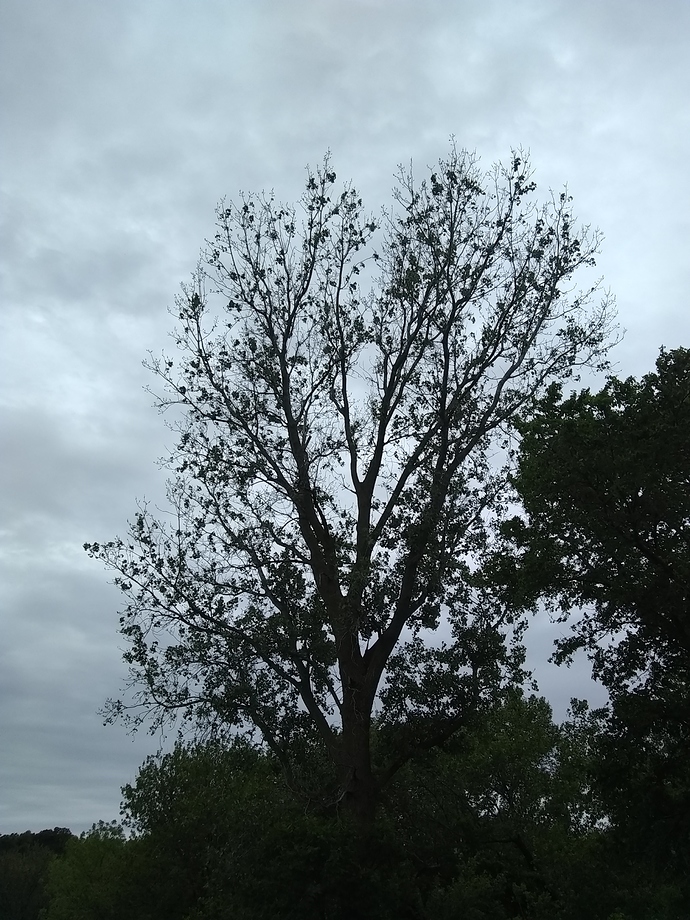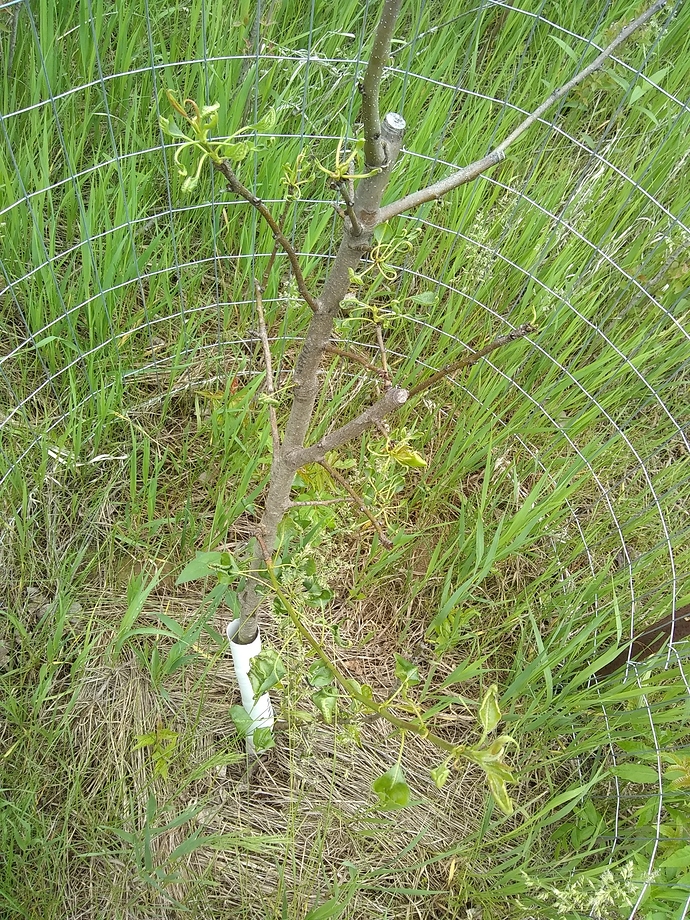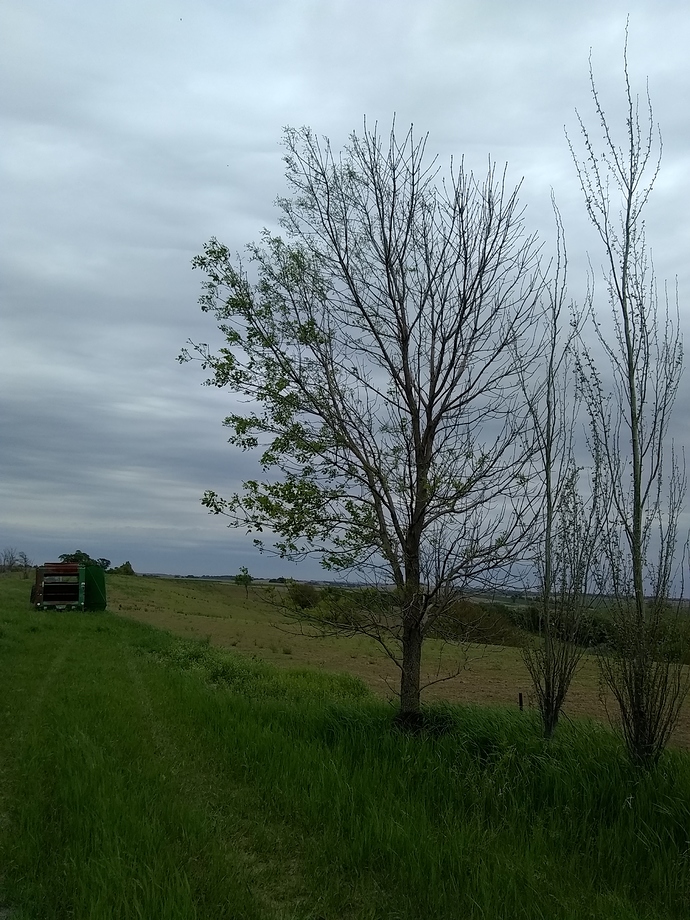Kevin,
At this point I might start to think about replacing anything that is still damaged or growing strange. No reason to spend time on stock that won’t produce or will take yrs. to come back. Just my opinion, best.[quote=“jeremymillrood, post:200, topic:978”]
I did have a question about 24D…Within the last couple of weeks I used it on my lawn to treat dollar weed that was in close proximity to my fruit trees. after reading this, I’ll never do that again. Curious what concentration of the 24D is harmful, the amount I’m using is about a couple tablespoons per gallon of water in a hand sprayer…
[/quote]2,4D is available as differing chemicals, An ester form that moves into plants rapidly and on the wind easily, aka brush killer; an amine that doesn’t volatilize as easily as the ester form and is a little slower to move into plants aka amine 4. Harmful concentrations vary widely and can be weather dependent. Warm, humid, sunny weather is the worst or best depending on what you want to do. Label rates of most 24D’s are 1.5 oz./per 1000ftsq. Other chemicals are mixed w/ 24D to broaden its spectrum, some are root killers or other growth regulators.
If you are familiar with 2,4D damage, on very susceptible plants either form will show symptoms in 5-10 minutes.
You were fortunate.
I’ll defer to experts like @Chikn to answer your questions…I’m no expert on anything except (unfortunately) its affect on fruit trees. What is strange to me is that I myself spray roundup (glyco) around even young fruit trees and haven’t had any problems (though I am careful). It is a full-on, kills EVERYTHING spray so I’d have thought it would have greater risk of damage, but I’ve learned since that 2, 4-D is famous for its drift and damage capacity- in large part due to the mechanism phil described to you above. So my advice is to not use it anywhere near your fruit trees! If you feel compelled to fight broadleaf and leave the grass, consider the granular weed and feed products.
@Chikn - I’m in full agreement on replacing those still damaged trees. My plan was to wait and see how everything behaved this spring and replace those that still seem to have problems/ Fortunately that only seem to be my euro pears, and I’ll be replacing them I’m pretty sure. That’s a shame, because I had one mislabled mystery pear that was INCREDIBLE but I never took photos of the fruit and its not bearing now so there is no telling what it was.
Keep those things(w&f) well away for your trees. Dicamba (Banvel) is the active that gives W&F clover control that 24D doesn’t have. Banvel doesn’t tie up in the soil and is a root active herbicide. Roundup and all its clones (active glyphosate) are only effective on green plant tissue. Coarse spray applications, large droplet size, are less likely to drift and cause unwanted and offsite damage. Above all else, Read and follow the label direction!!
City, this isn’t only for your edification, all of us that use herbicides, pesticides, need to be reminded to read the label and follow instructions. I have used the cides for 35+ years and have always started the spray season by reading labels. Not great lit., but keeps me out of trouble.
Thanks for the soapbox time.
If you’ve noticed, I can count on one hand the times I’ve actually tried to offer anyone advice on here about anything fruit tree related. Even after 3 years I fully recognize that I am a novice, and accordingly I’m almost always very careful not to offer any advice unless I’m certain- and since I rarely am, I just err on the side of taking advice but not giving it. This was an exception to that policy and I apologize to everyone for it- especially @jeremymillrood. We have an apple tree in a city park and our crews routinely use the granual weed and feed right under and around it with no problem, and based on my experience with the liquid stuff killing everything, it seemed like the weed and feed must be safer so I mistakenly suggest it as a slightly better alternative. I should not have done that if I weren’t sure, and I’m sorry for that. I myself get frustrated when I see people on here giving advice that is wrong or that they clearly are just guessing about, and now I pretty much did it myself. I’m sorry for that. In the future, I’ll either return to my policy of not offering advice since I am not an expert, or at least only chime in on things I am certain about.
Thanks for correcting my mistake and hopefully saving Jeremy or anyone else who could have read my response.
@thecityman, no apologies necessary…I treat the things read on the internet like anything else, caveat emptor…it’s up to me to do my own research and decide the best course of action…if I screw up there is no one to blame but me.
I’m pretty sure the concentration of 24D that I used wasn’t sufficient to do any damage, even the dollar weed that I directly applied it to showed little effect. Guessing it was a combination of the rain we got right after I put it on and the fact that it is at least a couple of years old and may have lost some of it’s potency.
To be on the safe side, I’ll be disposing (properly of course) of the remaining 24D…
As far as weed and feed goes, I never apply it to the areas where my fruit trees are…better safe than sorry.
Appreciate everyone’s advice.
Do Not apologize. You didn’t know and it gave an opportunity to save another(s) from a serious mistake. We’ve all learned from your heartbreak and the chance it has given many to learn. No, No apologies!! You are the hero here!
For the sake of folks who may find and want to read this thread in the future- perhaps after they get hit with a 2, 4-D over spray, I wanted to post an update on long-terms effects.
In the end, the drift killed around 20 of my trees almost immediately. But even the majority of these didn’t just die in a week or two after the exposure. THey first showed strange growth and didn’t die for almost a month. A few just wilted and died the first week or two, but very, very few. And as I’ve said before, the effect on the trees depended more on variety and other factors than on the amount of exposure.
Anyway, what inspired this update is my desire to report on the long-term effect of 2, 4-D on the trees that were not killed immediately and didn’t die in the weeks or even years that followed. Specifically, I want to report on 4 pear trees that were only about 15 feet from ground zero of the spray. They are: Red Bartlett, Bartlett, Ayers, and Moonglow. They were- as the title of this thread shows- the first trees to show evidence of 2, 4-D drift. I have photos above. They started growing in a strange, twisted way. The new wood all had this twisty growth pattern. All the leaves grew out as long, super skinny things. DIdn’t really even look like lives. Just long slivers of green, leaf-like material that almost looked like pine needles or something. Strange.
The above described growth continued the entire first year (drift occurred in May). The second year, the leaves came back and looked pretty normal. There was still a lot of that twisted, spindly growth and the tips of all limbs and branches were thinner than usual. Also, the tree created a lot of what I’d call callous “warts”. Hard to explain and I don’t think I have photos. Basically, the tree created a very large number of what looked like spurs but much fatter. They were little stubs that were gnarly and about 1/2 inch long with little or no growth coming out of them. The texture and appearance looked just like really, really ugly saddle grafts that have calloused into big knots with extra rough bark on them. The tree did not bloom the year of the spray and they did not bloom the following year (year 2). There was also much less growth of any kind than normal, aside from that small amount of growth being as I’ve just described.
Now we are on year 3 after spray, and these trees clearly are not recovered and probably should just be cut down. This year’s leaves look completely normal, and the growth on the limbs is much more normal- it is straight and there is more of it. But it’s still a little spindly. But the problem is fruit production- or lack of. In spite of what I just said, I think I did get maybe 1-2 bloom clusters last year on each tree (8 ft tall, 4 years old last year) but they didn’t set fruit. This year isn’t much better. I did get maybe 4-5 bloom clusters on each tree. But think about how few that is for a 8 ft, 4 year old tree. This year, I got maybe 7-10 clusters of blooms on each tree. That is still a VERY low number of blooms for 5 year old trees that are 9-10 feet tall now. But the frustrating part is that they just turn black and fall off right after they bloom. I guess it is possible that could be fire blight, but other pear trees I have don’t do this. I’ve attached a photo of what happened to every single bloom on every one of the 4 pear trees that got sprayed. I’d love to hear if anyone thinks that what is shown in the photos is caused by fire blight or something other than the 2, 4-D exposure, but since its only happening to the exposed trees, I strongly think that is the problem. I’m going to leave these trees in the orchard another year or two as a research project, but I’m pretty sure they are ruined forever.
I’d give them more time. Plant pears for your heirs, or so they say in terms of production. I’ve got a number of five year old pears that haven’t produced yet. Out of my twenty or so varieties, Bartlett had the worst fireblight by a significant margin, but I agree, that doesn’t look too much like fireblight to me at least.
Very typical herbicide damage, so sorry, suddenly I’m depressed.
I hadn’t been to this forum lately, but one of your threads came up when I was googling about herbicide damage. I had just noticed a lot of my trees looks like they were hit by herbicide spray drift, so this was a good topic to look through.
I sure hope you are mistaken. If not, I at least hope your damage is from roundup (glycol) and not 2,4-D. You’d think a “kill everything” herbicide would be worse than a broadleaf only, selective herbicide, but I assure you it isn’t. 2,4-D drifts much further, does more damage, lasts far longer, etc.
If you post some photos I’ll be glad to take a look and try to confirm whether you have been the victim of drift, and if so what kind. Again, I hope you haven’t been hit…it is a real nightmare!
Round up isnt glycol, like a few people on this post have said. Its glyphosate.
OF course you are right- I’m not sure how I got in habit of abbreviating it that way. I use generic so it says glyphosate right on the front of my bottles, so I should have known that abbreviation is bad form. But thanks for the correction.
No problem. Just didn’t want people running out and buying glycol, an antifreeze, and putting it on plants that they want to kill. They might not get the results they were looking for.
Here are some pics, I did have the co-op come out today and they confirmed that it was 2,4d drift by an airplane. They said they have seen this happen before and the trees leaf out fine again, so were not worried about it.
Yes sir, you definitely have been hit with 2, 4-D. That second photo, the close up, is the one that tells the story. I’m glad you aren’t worried and I’m glad the co-op told you that the leaves will grow back and that will be the end of it, but that is not my experience at all- at least with some trees. Some species of trees did just drop leaves, put out new ones, and that was the end of it. But other trees died (I lost about 23 trees that died from the spray) and other trees took 3-4 years to recover, and others neither died nor recovered. They have just remained frozen in time. This is easy to prove at my place because I had a few trees that were bought at same place and planted at same time in the same area- some that got spray stopped growing forever while their twin that didn’t get sprayed it 3 times bigger now.
Perhaps I am cynical, but I have to wonder if the co-op sold the spray or even paid the sprayer to apply it, so they are trying to paint a rosy picture for you to prevent you from suing or asking for damages or reporting them to the state. I don’t know about Iowa, but TN dept of AG has a whole division that deals with nothing but overspray. events. THey do investigations (incredibly thorough ones) and levy fines and other penalties. If I were you I’d report this- even if you are willing to let it go as an error. I say that because it will almost certainly happen again- especially if you don’t report it- and you will be in a far better position if you have previously reported it happening before. I completely understand that you probably just want to get along with neighbors and accept that they did it on accident and so on. But a first time incident won’t get them in much trouble anyway, and then there will be a record of it happening before when it happens again. And while you seem to have a positive, forgiving attitude right now, that is going to chance if those trees start dying and/or this starts happening over and over again. But to each his own…I’m sorry this happened and I hope your trees recover.
It might, it might not. Any fruit trees will be severely stunted, to the point where you might be better off planting new ones.
They or whoever ordered the spraying still damaged your property, wasted your time and effort that it took to plant those trees and care for them.
I meant the co-op was confident they would leaf out again and they didn’t act worried that the trees would die, they are the ones that sprayed it for my neighbor.
But me, I’m very worried, especially for my little trees that seem to really be struggling, also I had just had planted an orchard for me and wildlife not far from the area, so the pears and some of the apples don’t look the best. It hit trees as far as 700ft away I think, shows you what a spray plane can do. Usually that pasture is sprayed with boom sprayer ground rig and hasn’t been anything like this. A state pesticide investigator suppose to come out and they’ll hopefully give a more impartial view on this situations, thanks





